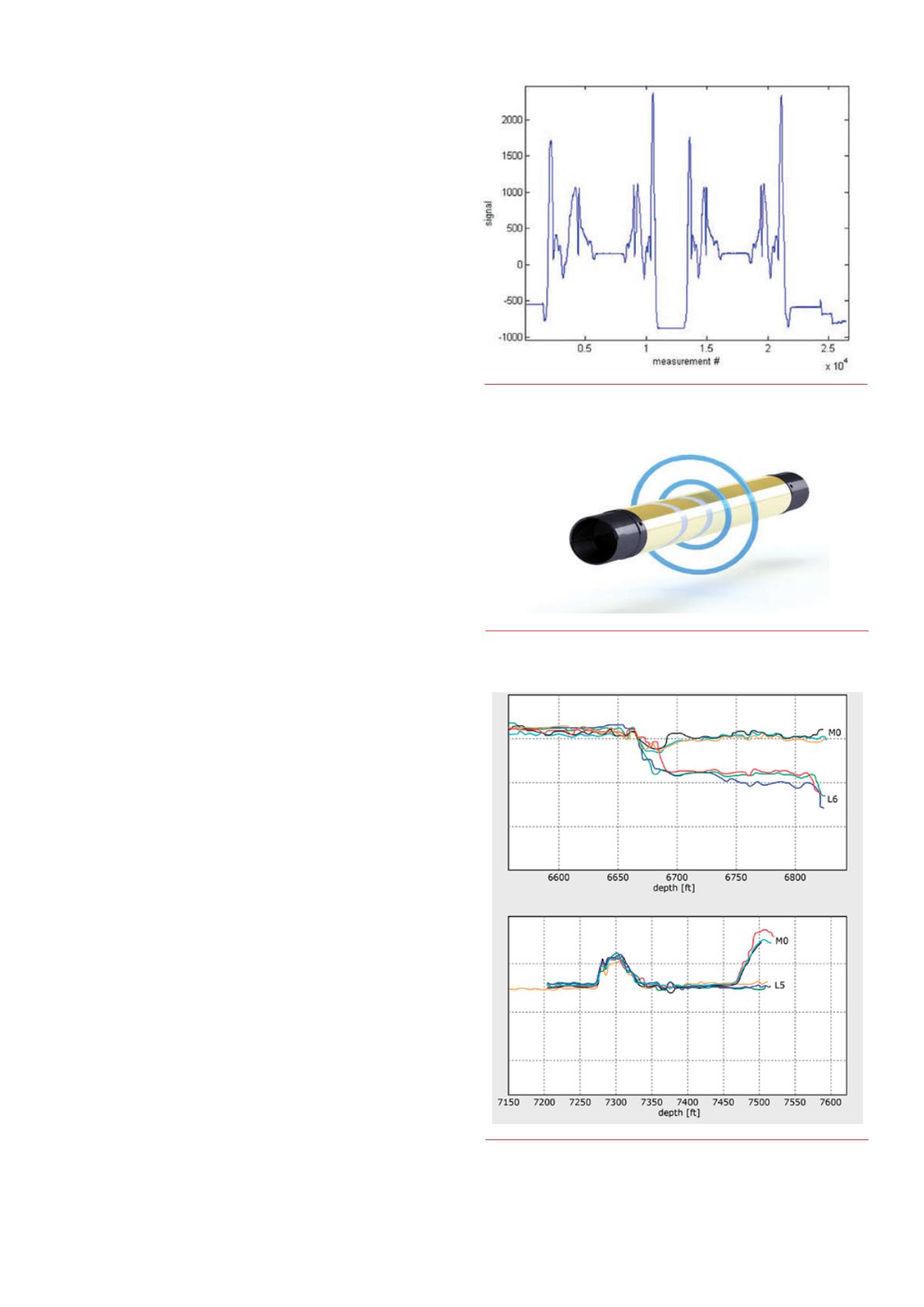
June
2016
Oilfield Technology
|
39
can be computed. This insight can then be capitalised upon to
aid in well optimisation, reservoir production and overall field
management.
Staying ahead of the curve, Saudi Aramco has been investing
heavily in a strategy for maximum reservoir connectivity or MRC.
The Haradh III development, completed in 2006, demonstrated the
success which could be achieved with extended reach, horizontal,
multilateral wells.
3
As a part of that strategy they would need to
be able to gather production data in multilaterals to illuminate
their decision making process; production data incorporated
into reservoir modeling incorporated into field management.
Many of these wells were fitted with sensors and controls to allow
monitoring and corrective action, providing important data to
fulfill the objectives outlined previously.
Notwithout challenges
But what about multilaterals wells that had been drilled prior
to this or in other fields? What about wells where the economics
were not conducive to a fully automated approach? Until recently
there was no effective or efficient way to successfully enter the
multilateral sections of wells with PLTs. Run on electric line
(e-line) or slickline, the challenges were that the tools could
not ‘see’ where the lateral junctions were nor could they orient
themselves such that they would move out of the mainbore
and into the lateral. This was compounded even further by the
increased application of highly deviated and horizontal wellbores.
Coiled tubing (CT) could convey PLTs into the wells but could not
effectively guarantee orientation into the lateral section. One
service provider did develop a mechanical, bottom orientation
sub to locate and access laterals, but the tools that could be run in
combination with it were limited.
4
Again, Saudi Aramco remained firmly ahead of the curve in
overcoming this challenge. Recognising the need to add laterals
to existing wells for increased production and to assess the
laterals in already existing wells, the EXPEC Advanced Research
Centre Production Technology Team, in partnership with Welltec,
in 2008 began to consider the challenges of entering laterals
in order to take measurements.
5
The objective was to develop
a multilateral intervention tool that could be used to reliably
access and gather data from the various multilaterals, aiding to
further illuminate operators’ well, field and reservoir strategies.
Themultilateral interventiontool
The multilateral intervention tool is built on an electromechanical
platform that merges a sophisticated sensor package with an
actuator system to detect and selectively enter laterals with e-line
tools. Figure 2, shows a schematic of the 2 ⅛ in. OD, toolstring. It is
comprised of a number of discrete components, as shown, which
are detailed further below. One of the critical design elements was
the capability of the tool to be able to work in combination with
as many other tools as possible, thus ensuring wide versatility of
the data which could be acquired during the lateral intervention.
Hence the multilateral intervention tool can be run with any e-line
company and convey their technology into the lateral section(s).
Development
The multilateral intervention tool went through a number of
versions and trials before the final version was produced. Early
versions of the tool were ‘wired,’ incorporating a feed-through
Figure 3.
WHS log over aCH junction.
Figure 5.
Comparison ofmainbore and two lateralsmappedbyWUS -
(A) top, and (B) bottom.
Figure 4.
Graphic representation of theWUS.


